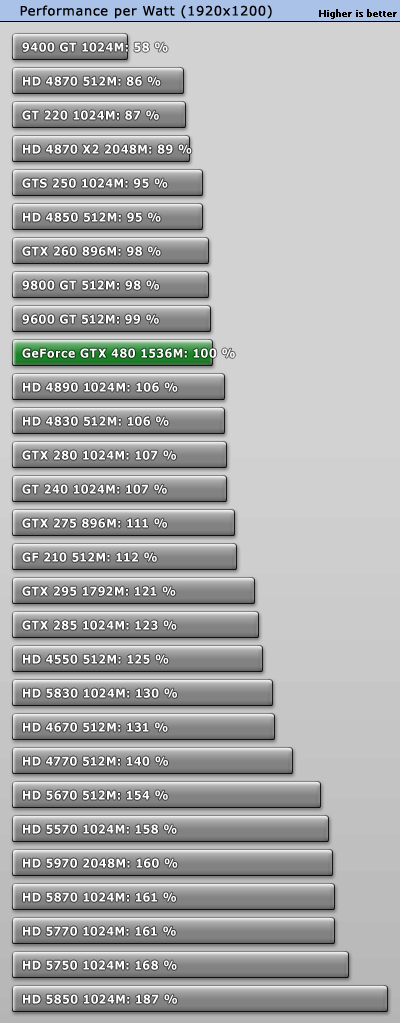The simple fact of the matter is that there is never a linear relationship between performance and power consumption, so I don't see any reason whatsoever to worry about such things as the ratio between the two. Ratios are only reasonable when there's (at least approximately) a linear relationship.
But if nVidia puts out, for instance, a mainstream part soon using a smaller core, it's likely to have vastly better performance/power. SLI, by contrast, has somewhat lower performance/power because the power consumption is doubled while performance is not.
It just makes more sense to me to look at the whole package: price, performance, power consumption, features, software compatibility, etc. and judge based on which product maximizes your own personal utility. Pulling out ratios that are meaningless from the get go doesn't help to elucidate this at all.


